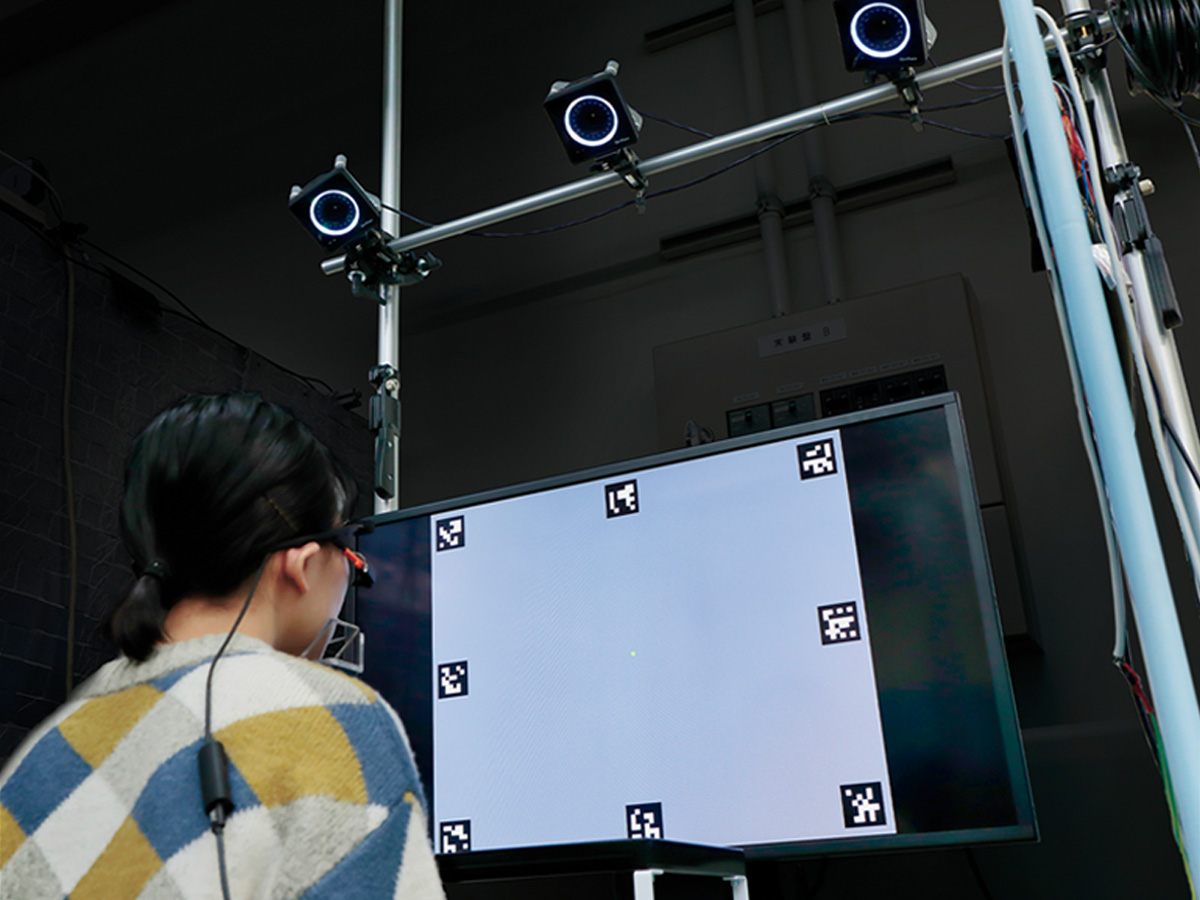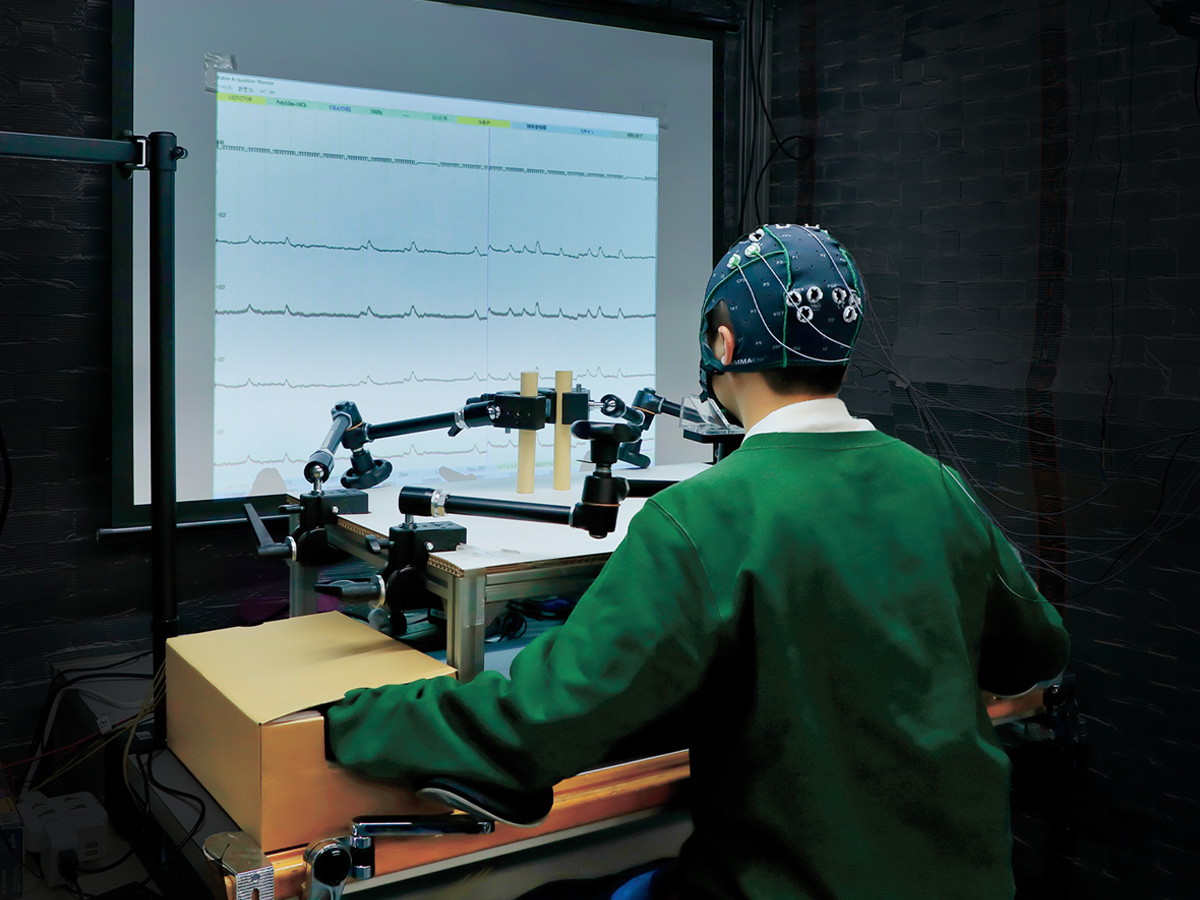STORY #4
Facilitation of the Brain Training Efficacy using a Technique based on individual Neural Characteristics
Takeshi Sakurada, Ph.D.
Assistant Professor, College of Science and Engineering
STORY #4
Takeshi Sakurada, Ph.D.
Assistant Professor, College of Science and Engineering
In stroke rehabilitation and sports training for athletes, it takes time for the training to take effect, and not all trainees get the maximum results for the training amount they receive. Many, one could thus imagine, hope for a new training method that more often yields maximum results in the most efficient way possible.
Takeshi Sakurada is seeking to make that hope a reality through research on human cognitive function. Recently, he reported findings that could boost the effectiveness of stroke rehabilitation for patients with motor dysfunctions. Sakurada focused on the individual attentional strategy during motor exercises.
“It is said that focus of attention is an influential factor that promotes both motor improvement during stroke rehabilitation and motor learning among healthy people. The importance of this factor has been well pointed out in the sports psychology field,” says Sakurada. “Attention” refers to the brain’s cognitive function, which acts as a filter for choosing important sensory information from vast amounts of information. Regarding the focus of attention, two types of strategies must be considered when discussing how attention is directed. One is called “Internal Focus (IF),” in which performers direct their attention to the physical movement itself. The other is called “External Focus (EF),” a state in which the focus is on the movement outcomes. For example, when someone throws a ball, directing attention to the wrist angle would comprise IF while directing attention to the trajectory of the ball would comprise EF. The majority of previous literature on this research topic has shown that EF is more effective than IF during motor tasks. However, Sakurada questioned these results, asking himself, “Is EF really effective for all people?” To answer this question, he conducted experiments to examine whether there were any individual differences to the most effective way of “directing attention.”
So far, he has compared the differences in performance under IF and EF conditions during motor tasks in healthy young individuals, healthy elderlies, and stroke patients. He found that only about half of the total number of individuals demonstrated better motor performance under EF conditions. This confirmed that determining which type of attention is most appropriate for an individual is vital to facilitating their motor improvement.
“If we consider the differences in brain functions per individual, we will be able to develop more effective rehabilitation and motor training protocols. I intend to apply this finding to create a “tailor-made neurorehabilitation” program suitable for each individual,’ says Sakurada.
The brain is, after all, responsible for controlling “attention.” “The fact that the most appropriate attentional strategy differs from one person to another during a motor task tells us that there are individual differences in the brain functions associated with cognitive processing,” Sakurada comments. The prefrontal cortex and parietal association area are known as areas important for attention functions; however, Sakurada focuses on the lower sensory areas (somatosensory cortex and visual cortex), which have a functional relation to the aforementioned. These are the gates through which internal body information, such as tactile information, and external body information, such as visual information, flow into the brain. Sakurada demonstrated the possibility that in a healthy young population, responses in the somatosensory and visual cortices reflect the suitable individual attentional strategy during movements. Specifically, he discovered that individuals who are more suited to the IF strategy tended to show stronger electroencephalogram (EEG) responses from the somatosensory cortex when their attentions were directed to vibrotactile stimuli. In contrast, individuals who were more suited to the EF strategy tended to show stronger EEG responses from the visual cortex when their attentions were directed to visual flickering stimuli.

In addition to EEG measurement, evaluations to measure an individual’s physical movements using a motion capture system or monitor their eye movements through an eye-tracking system provide a comprehensive and multi-faceted report that reflects brain function. Combining the information obtained from multiple biological signals would allow for more accurate visualization of the unique characteristics of an individual’s brain function.

Neurofeedback training setups. Individual’s brain activities are analyzed in real time and instant feedback is obtained as visual or auditory information. The goal is for an individual to achieve an ideal brain activity state by monitoring their own brain activity. In this way, they gain the ability to direct their attention to the appropriate target.

Prototype of the vibrotactile stimulator.

Electric noise reduction is achieved using a brushless DC motor. Vibrotactile stimulation is provided by converting the motor’s rotational motion into the protrusion’s vertical motion.

The device can induce stimulations from the tip of the index finger to the tip of the small finger with an arbitrary frequency. The plan is to scale down the device to the size of one’s palm in the future.
Sakurada is currently using his findings concerning sensory areas to develop a neurofeedback system to train the attention function.
Neurofeedback is one type of biofeedback using brain activity. It involves connecting brain imaging equipment to a computer and a person, and is designed to help people learn to control their own brain activities based on analyzed brain activities in real time. “An advantage of neurofeedback is the visualization of brain state, something that we do not usually get to see,” Sakurada explains. In particular, regarding directing attention, it is typically not easy to recognize if appropriate attention was actually given during a task even when an individual tried to give their utmost attention to a target. This means that while one may think they paid proper attention to something, they practically may not have. If an individual’s attentional state can be verified in real time, they could learn how to accurately direct their attention to what they need to focus on, which would lead to more effective rehabilitation and motor learning.
Based on his earlier research findings, Sakurada has developed noiseless stimulus devices that elicit the target EEGs from sensory areas and has proposed an algorithm to estimate and feedback the attentional state from EEG responses. He is currently developing a system that trains an individual’s attention directing ability to either his or her own body or their external environment. The EEGs utilized in this system are easy to detect and therefore advantageous in terms of measurements. “This approach based on EEGs evoked through sensory stimuli will be easier to miniaturize and thus practically implement in the field, such as in rehabilitation and sports training. Furthermore, since the proposed system considers individual differences in the brain characteristics, compared to conventional training systems, it can maximize benefit for even more people,” explains Sakurada.
As of 2021, a new project intended to further develop Sakurada’s work has begun. He aims to further research and develop his neurofeedback system so it can be used as medical equipment for the rehabilitation of patients who have developed attention deficit disorders due to stroke. We hope Sakurada’s research will emerge as a beacon of hope for those who are struggling to recover from brain dysfunction.
